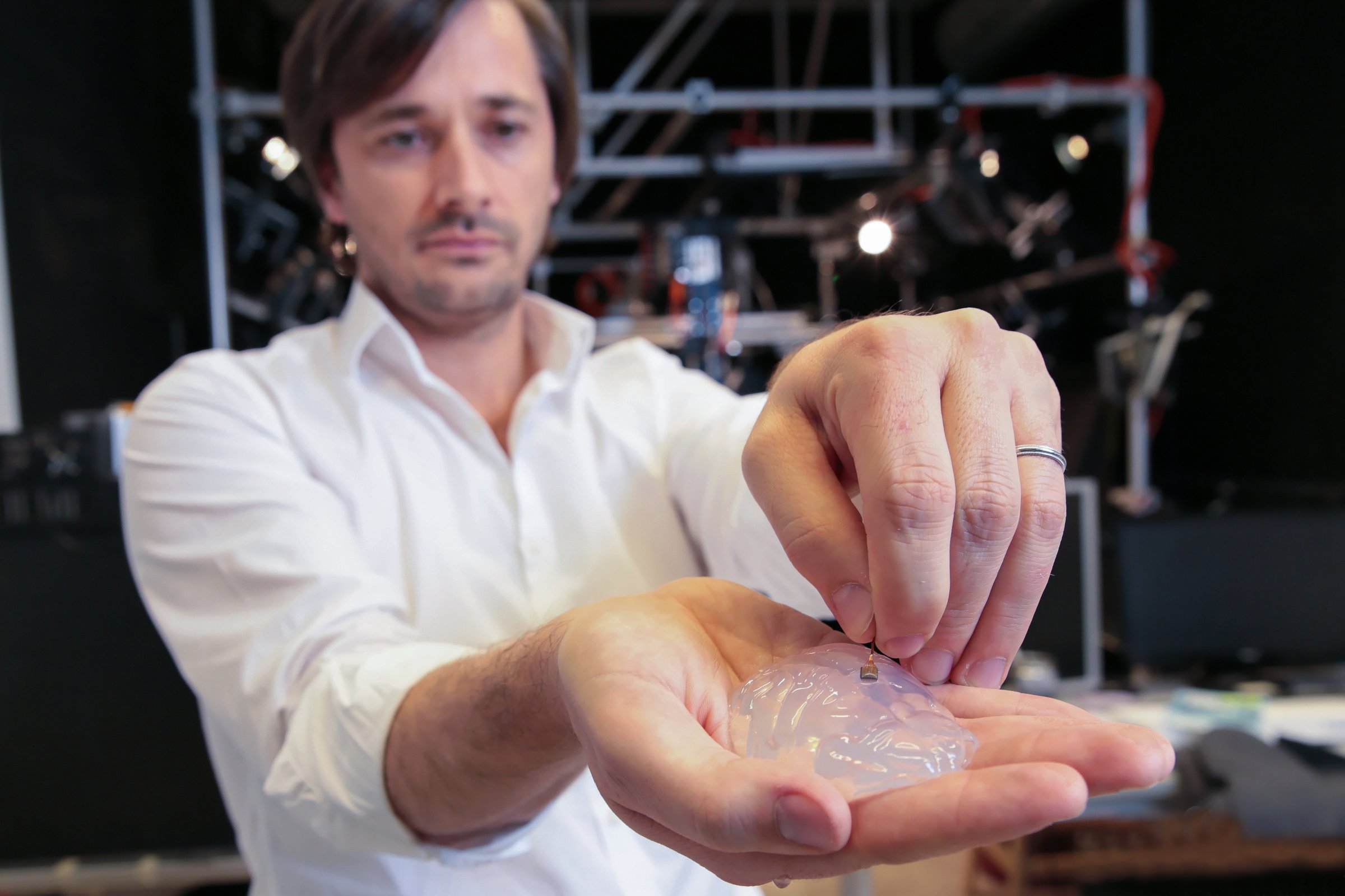
Two rhesus monkeys paralyzed by a spinal cord injury were able to walk again after scientists installed a wireless device in their brains to control movement, according to a new study.
Researchers hope that the breakthrough, reported in the journal Nature, can eventually be applied to humans with paraplegia. The device incorporates parts approved for human use and some have suggested the first human trials could take place by 2020.
Normally, the brain coordinates movement by sending electrical signals throughout the body using the spinal cord. People and animals with spinal cord injuries—like the lesions experienced by the monkeys in the study—can be immobilized because of the interruption. The new device sends wireless signals from the brain to “hotspots” that control different motions. In this case, the hotspots were installed on the lower spinal cord.
The idea behind the device has been around since the 1970s but only recently has technology advanced to allow such a development, according to an accompanying article published in Nature. The advance could help the 250,000 to 500,000 people who suffer spinal cord injuries each year, according to World Health Organization data.
More Must-Reads From TIME
- The 100 Most Influential People of 2024
- Coco Gauff Is Playing for Herself Now
- Scenes From Pro-Palestinian Encampments Across U.S. Universities
- 6 Compliments That Land Every Time
- If You're Dating Right Now , You're Brave: Column
- The AI That Could Heal a Divided Internet
- Fallout Is a Brilliant Model for the Future of Video Game Adaptations
- Want Weekly Recs on What to Watch, Read, and More? Sign Up for Worth Your Time
Write to Justin Worland at justin.worland@time.com